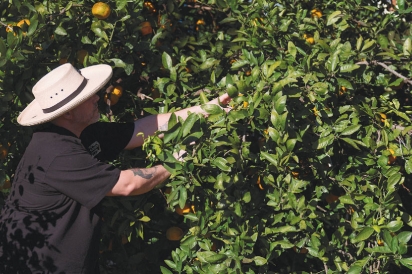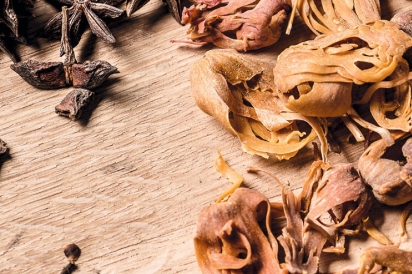Bitters Truth
A drop or two adds flavor, and history, to your cocktails
At their most basic, bitters are nothing more than a complex extract with a heavy bitter note. Adding bitters to a food or drink works similarly to the way salt does, as a flavoring agent. Like salt, they are typically used sparingly so that you don’t taste the bitterness. Also like salt, bitters bring out the flavors in your food and drink, making it all taste much, much better.
Another way to think about the role of bitters in cocktails is to think about the role of hops in beer. Just as hops can balance the innate sweetness of beer, bitters does the same for a cocktail.
In the late 19th century there were hundreds of brands of bitters. Snake oil salesmen rolled into towns with their decorated wagons selling these early bitters as medicines, with dubious claims to cure everything from baldness to gout. The flavors and ingredients were as colorful as the men who sold them. Some ingredients were more harmful than helpful.
According to the FDA, “The market in medicines, without any regulation, was essentially the same as the illicit trade today in heroin, cocaine and other drugs. The supply was unreliable, the purity suspect, the price high and variable.” So, the FDA was formed in part to protect the public from the harmful products and the con artists who sold them. Unfortunately, the vast majority of the brands—good as well as bad—were swept away by the FDA and the few that remained were further stifled by Prohibition.
Angostura was one of the few brands that made it through those troubling early years of the 20th century. Made in Trinidad, and with a demand in Europe, it thrived when others faltered. Angostura was so popular in England it was bestowed a British Royal Warrant, allowing it to be served at official functions to the royal family. Another brand that managed to stick around was New Orleans’ own Peychaud’s. This was in no doubt very strongly tied to the popularity of drinking in New Orleans and to the Sazerac, in which Peychaud’s is used in abundance. It wasn’t uncommon for bartenders to make their own bitters as well, something I got into during my bartending years.
I had been collecting old bottles of bitters for a long time. I would shop at antique stores and flea markets all over to look for new and unique bottles. While I was working at Iris, I was poking around at an antique shop Uptown on Magazine Street when I came across a bottle of Jung & Wulff Orange Bitters. They had been made in New Orleans in the early 20th century—prior to Prohibition. And there was still a little left in the bottom of the bottle. I began experimenting with ingredients to re-create these bitters. Then I began researching other extinct brands and the ingredients in them.
At the time I started experimenting with bitters, there was no commercial production of them taking place in New Orleans (Peychaud’s is now made at Buffalo Trace Distillery in Kentucky) and I wanted to resurrect some of our bitters-making history with my company, El Guapo Bitters. Using what I learned resurrecting the formulas for these old brands, I delved deeper into the complex blends and unique and hard-to-find flavors. I also found that bitters generally fit into two categories: complementary or contrasting blends of flavors. With this knowledge I have been able to create many unique flavors of bitters and syrups, such as El Guapo Gumbo Bitters.
Like I said, bitters are nothing more than a complex extract. Creating your own is not as daunting as you may think, though you’ll need time and patience. Most ingredients, even the ones that sound obscure, are easy to find over the internet. It is rewarding to search and use local, organic, heirloom produce when you can.
The basic components of bitters are a base for flavor extraction and preservation (water, alcohol and glycerin), bittering agents (gentian root, wormwood, etc.) and aromatics (citrus leaves, orange peel, coriander, etc.). Below is a recipe for Citrus Bitters, which you can use as a learning tool and as inspiration. I usually tell people to think of a cocktail and the flavor they would like to create as an enhancement. Now incorporate that into this bitters recipe with those flavors in mind. Swap out an ingredient or two for the flavor you aim to create. Don’t be discouraged if you don’t like it the first time. Make notes and try again with ingredients in different concentrations or use additions or subtractions as needed.
Because bitters are one of the main components of the simple Old Fashioned, it is good starting point to learn about the flavor of your bitters and to let that flavor shine.
Scot Mattox is the founder of El Guapo Bitters, an accomplished bartender and a veteran of the United States Marine Corps (where he picked up the nickname “El Guapo”). El Guapo Bitters donates 10% of its profits to help wounded veterans.








